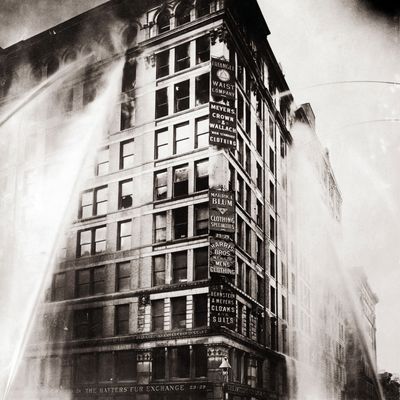
Today is the 103rd anniversary of the Triangle Shirtwaist Fire, the New York City garment factory fire that killed 146 workers (mostly immigrant women) when a dropped match lit fabric and patterns ablaze and locked doors trapped women inside.
The tragedy prompted major labor and workplace safety reforms in New York. They were valuable, but are about as relevant to contemporary fashion as shirtwaists themselves: Today, more than 97 percent of American garments are imported from countries where our century-old regulations are not adequately enforced, like Bangladesh, the world’s second-largest garment exporter. Bangladesh’s Rana Plaza garment factory was the site of the deadliest accident in the history of the garment industry less than a year ago, when a factory built without a permit — but that passed Western audits — collapsed, killing more than 1,100 people.(More than half of the victims were women.)
Triangle Shirtwaist girls made between $7 and $12 dollars a week; the minimum wage for garment workers in Bangladesh at the time of the Rana Plaza collapse was $38 a month (not adjusted for inflation or cost of living). After worker protests following the disaster, Bangladesh’s government raised it to $68 a month, still way below the estimated living wage of $105 a month.
Meanwhile, the U.N.’s International Labor Organization (ILO) has been struggling to raise $40 million for the victims and their families from the retailers linked to the factory, including Joe Fresh, Benetton, Walmart, the Children’s Place, Mango, and Bonmarche. Last week, the ILO lost its biggest contributor in U.K. discount retailer Primark, which instead opted to pay $9 million to its own workers, leaving $1 million for the communal pot. In case you needed any more justification for buying expensive clothing.

